Conservation biology focuses on preserving ecosystems, species, and genetic diversity. It addresses biodiversity loss, habitat destruction, and human impact on natural environments, ensuring sustainable ecological balance for future generations.
1.1 Definition and Scope of Conservation Biology
Conservation biology is a scientific field dedicated to understanding and addressing threats to biodiversity. It integrates principles from ecology, genetics, and social sciences to develop strategies for preserving species and ecosystems.
The scope extends to studying habitat loss, climate change, and human impact, while emphasizing the importance of genetic diversity and ecosystem services. Conservation biology applies at global, national, and local levels, involving both in situ and ex situ methods to protect life on Earth.
1.2 Importance of Conservation Biology in the Modern World
Conservation biology is vital for maintaining biodiversity and ecological balance. It addresses key challenges like habitat destruction and climate change, ensuring the survival of species and ecosystems. By preserving biodiversity, it supports human well-being, economic stability, and global food security. Conservation efforts also protect natural resources, clean water, and air, while mitigating the impact of human activities on the environment. This field is essential for sustainable development and ensuring a healthy planet for future generations.
1.3 Key Concepts and Principles
Conservation biology relies on key principles such as biodiversity conservation, ecological restoration, and sustainable resource management. It emphasizes the importance of extinction prevention, habitat preservation, and the maintenance of ecological processes. Concepts like population dynamics, genetic diversity, and ecosystem services are central to its framework. Additionally, it integrates ethical considerations, promoting the value of nature and the need for human stewardship. These principles guide strategies to protect life on Earth, ensuring the long-term health and resilience of ecosystems in the face of growing environmental challenges and human-induced threats.
Biodiversity and Its Significance
Biodiversity refers to the variety of life forms at genetic, species, and ecosystem levels. It underpins ecological balance, supports essential services, and ensures the survival of life on Earth.
2.1 What is Biodiversity?
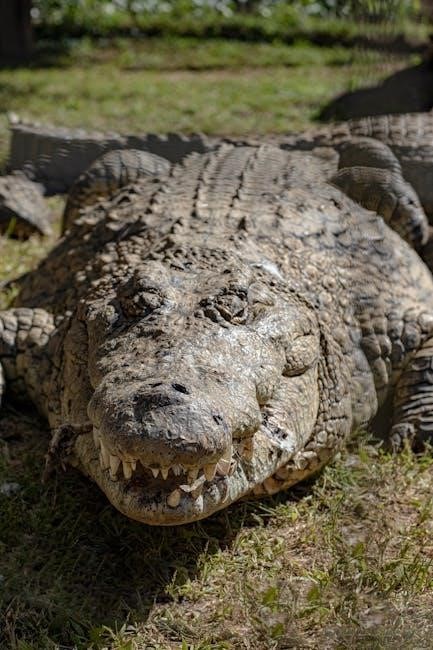
Biodiversity, or biological diversity, refers to the variety of life at three levels: genetic, species, and ecosystems. It encompasses the range of genes, species, and habitats within a region. Biodiversity ensures the survival of species by maintaining genetic diversity, which allows adaptation to changing environments. It also supports ecosystem services, such as pollination, soil fertility, and climate regulation, which are essential for human well-being and Earth’s functioning. Protecting biodiversity is critical for maintaining ecological balance and ensuring the planet’s resilience to environmental challenges.
2.2 Types of Biodiversity
Biodiversity is categorized into three main types: genetic, species, and ecosystem diversity. Genetic diversity refers to the variety of genes within a species, enabling adaptation to environmental changes. Species diversity is the number of species in a region, contributing to ecological complexity. Ecosystem diversity involves the variety of habitats and ecological processes within landscapes. Together, these types form a interconnected web that supports life on Earth. Each type plays a vital role in maintaining ecological balance and ensuring the resilience of natural systems to environmental changes and human activities.

2.3 The Role of Biodiversity in Ecosystems
Biodiversity is essential for maintaining healthy and functional ecosystems. It ensures the provision of ecosystem services like clean air, water, and soil fertility. Diverse ecosystems are more resilient to environmental changes, supporting nutrient cycling, pollination, and climate regulation. Functional diversity, the variety of roles species play, enhances ecosystem stability. Loss of biodiversity can disrupt these processes, reducing ecosystem productivity and increasing vulnerability to invasive species and climate change. Thus, preserving biodiversity is critical for sustaining ecological balance and the benefits ecosystems provide to humanity and other species.
Threats to Biodiversity
Biodiversity faces critical threats from habitat destruction, climate change, pollution, overexploitation, invasive species, and disease spread, endangering ecosystems and species survival globally.
3.1 Habitat Loss and Fragmentation
Habitat loss and fragmentation are primary threats to biodiversity, driven by deforestation, urban expansion, and agricultural intensification. These activities destroy and divide natural habitats, isolating species and reducing population sizes.
Fragmentation disrupts ecosystems, leading to edge effects, reduced genetic diversity, and increased extinction risk. It also impairs essential ecological processes, such as pollination and seed dispersal, further threatening biodiversity.
3.2 Climate Change and Its Impact on Species
Climate change alters ecosystems, disrupting species’ survival by shifting temperature and weather patterns. Rising temperatures affect species’ distribution, behavior, and phenology, leading to mismatches in ecological interactions.
Many species are unable to adapt quickly enough, facing extinction risks. Polar bears, coral reefs, and alpine plants are examples of taxa vulnerable to climate-driven habitat loss and physiological stress.
Indirect impacts include disrupted food webs and nutrient cycles, further threatening biodiversity. Addressing climate change is critical for conserving species and maintaining ecosystem stability.
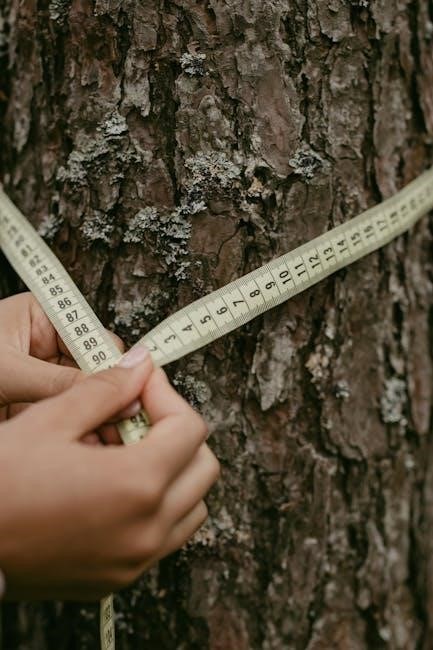
3.3 Pollution and Its Effects on Ecosystems
Pollution, including air, water, and land contamination, severely impacts ecosystems and species survival. Toxic chemicals disrupt biological processes, reducing reproductive success and immune function in wildlife. Oil spills and plastic pollution devastate marine life, while agricultural runoff causes eutrophication, harming aquatic ecosystems. Pollution also alters nutrient cycles, reducing biodiversity and ecosystem resilience. Chronic exposure to pollutants can lead to population declines and even extinctions, emphasizing the need for strict regulations and cleanup efforts to mitigate these impacts and protect vulnerable species.
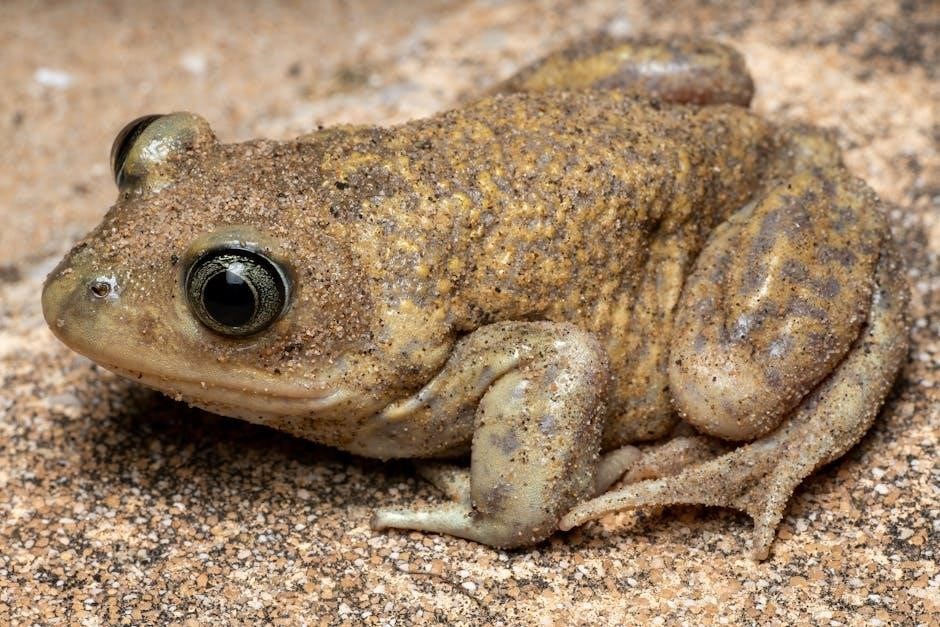
Conservation Strategies and Approaches
Conservation strategies employ various approaches to protect biodiversity, including habitat preservation, species management, and ecosystem restoration, aiming to enhance resilience and sustainability.
4.1 In Situ Conservation
In situ conservation focuses on protecting species within their natural habitats, ensuring the preservation of genetic diversity and ecological interactions. This approach often involves habitat restoration, the establishment of protected areas like national parks, and the management of ecosystems to maintain biodiversity. Techniques include anti-poaching measures, control of invasive species, and the creation of corridors to connect fragmented habitats. In situ conservation is cost-effective and allows species to evolve naturally, making it a cornerstone of biodiversity protection strategies.
4.2 Ex Situ Conservation
Ex situ conservation involves protecting species outside their natural habitats, often in controlled environments like zoos, botanical gardens, and seed banks. This method is particularly useful for endangered species facing imminent threats. Techniques include captive breeding programs, artificial insemination, and germplasm storage. Ex situ conservation helps preserve genetic material and can reintroduce species to the wild when conditions improve. However, it is resource-intensive and may not fully replicate natural ecological interactions. Despite these challenges, ex situ conservation remains a vital complement to in situ efforts, ensuring species survival during critical threats.
4;3 Restoration Ecology
Restoration ecology focuses on rehabilitating degraded or damaged ecosystems to restore their natural functions and biodiversity. It involves assessing ecosystem damage, developing restoration plans, and implementing practices like replanting native species, controlling invasive species, and reintroducing key ecological processes. Monitoring and adaptive management are crucial to ensure long-term success. Restoration ecology not only enhances biodiversity but also improves ecosystem services, benefiting both wildlife and human communities. Challenges include climate change, limited resources, and the complexity of ecosystem dynamics. Successful restoration often requires collaboration between scientists, policymakers, and local communities to achieve sustainable outcomes and promote ecological resilience.

Tools and Techniques in Conservation Biology
Conservation biology employs various tools and techniques, including ecological monitoring, data analysis, and advanced technologies, to manage and protect biodiversity effectively, ensuring sustainable ecosystems and species preservation.
5.1 Ecological Monitoring and Assessment
Ecological monitoring and assessment are critical tools in conservation biology, involving the systematic observation and measurement of ecosystem components over time. These practices help track biodiversity trends, evaluate conservation efforts, and detect early signs of environmental degradation. Methods include field observations, remote sensing, and statistical analysis to collect data on species populations, habitat health, and environmental conditions. Regular monitoring enables scientists to identify threats, assess the effectiveness of management strategies, and make informed decisions for sustainable conservation. It also supports adaptive management by providing a scientific basis for adjusting conservation practices in response to changing conditions.
5.2 Geographic Information Systems (GIS)
Geographic Information Systems (GIS) are powerful tools in conservation biology, enabling spatial analysis and mapping of ecosystems. By integrating geographical data, GIS helps identify patterns, such as habitat distribution, species ranges, and environmental changes. It supports conservation planning by visualizing land use, tracking biodiversity hotspots, and assessing human impact on landscapes. GIS also aids in monitoring climate change effects and designing protected areas. Its ability to layer and analyze data makes it indispensable for creating accurate maps and informing policy decisions, ensuring effective and targeted conservation strategies.

5.3 Genetic Analysis in Conservation
Genetic analysis plays a crucial role in conservation biology by providing insights into species’ evolutionary history and population dynamics. Techniques like DNA sequencing help assess genetic diversity, identify species, and trace gene flow. This information is vital for designing effective conservation strategies, such as managing breeding programs or reintroducing species. Genetic data also aid in understanding adaptation to environmental changes, guiding efforts to enhance resilience in threatened populations. By revealing genetic vulnerabilities and strengths, these analyses inform targeted interventions, ensuring the long-term survival of species and maintaining healthy ecosystems.
Case Studies in Conservation Biology
Case studies provide practical examples of conservation efforts, highlighting successful species recoveries and challenges faced, offering valuable lessons for refining strategies and improving future outcomes.
6.1 Successful Species Recovery Programs
Successful species recovery programs demonstrate the effectiveness of targeted conservation efforts. For instance, the reintroduction of the California Condor and Black-footed Ferret involved captive breeding and habitat restoration, significantly increasing their populations. Similarly, the recovery of the Gray Wolf in Yellowstone highlights the importance of ecosystem balance. These programs often rely on collaborative efforts between governments, NGOs, and local communities. Key factors include science-based strategies, habitat preservation, and adaptive management. Such successes provide valuable insights and models for addressing other endangered species, showcasing the potential for recovery when conservation efforts are well-executed and sustained over time.
6.2 Challenges in Endangered Species Conservation
Conserving endangered species faces numerous challenges, including habitat loss, climate change, and human-wildlife conflict. Limited funding, political barriers, and socio-economic pressures often hinder effective conservation. Additionally, species with low population sizes or specialized habitats are harder to protect. Climate change exacerbates these issues by altering ecosystems and disrupting species interactions. Addressing these challenges requires integrated approaches, combining research, policy, and community engagement. Despite successes, many species remain vulnerable, emphasizing the need for adaptive and resilient conservation strategies to ensure their survival in a rapidly changing world. Collaboration across sectors is critical to overcoming these obstacles.
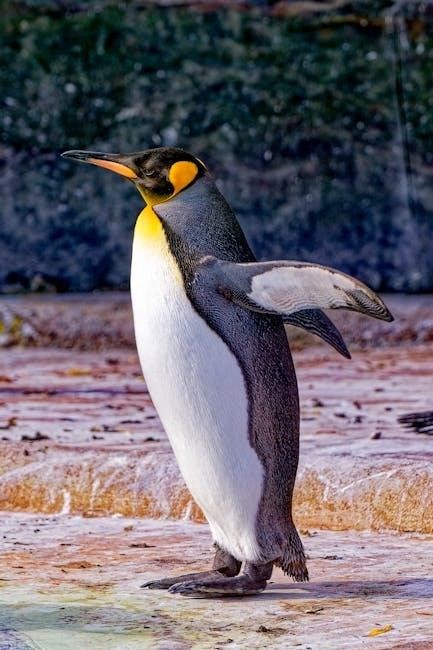
The Role of Policy and Legislation
Policies and legislation are crucial for conservation, providing legal frameworks to protect species and habitats. They ensure enforcement of protective measures and promote global cooperation to address biodiversity loss.
7.1 International Agreements and Treaties
International agreements and treaties play a vital role in conservation biology by establishing global standards and commitments. Key treaties include the Convention on International Trade in Endangered Species of Wild Fauna and Flora (CITES), which regulates wildlife trade, and the Convention on Migratory Species (CMS), protecting migratory species. The Ramsar Convention focuses on wetland conservation, while the Convention on Biological Diversity (CBD) promotes biodiversity protection. These agreements foster collaboration, enforcement, and sustainable practices across borders, addressing global threats like climate change and habitat loss; They are essential for harmonizing conservation efforts worldwide.
7.2 National and Local Conservation Laws
National and local conservation laws are critical for implementing biodiversity protection within specific jurisdictions. These laws establish legal frameworks to safeguard species, habitats, and ecosystems at regional levels. Examples include the U.S. Endangered Species Act and the EU’s Habitats Directive. They regulate activities like deforestation, mining, and pollution, ensuring sustainable practices. Enforcement agencies monitor compliance, often imposing penalties for violations. Local ordinances may protect wetlands, marine areas, or urban wildlife. These laws adapt global conservation goals to local contexts, addressing unique biodiversity challenges and fostering community involvement in environmental protection. They are vital for preserving regional biodiversity and ecological integrity.
Public Awareness and Education
Public awareness and education are vital for promoting conservation by informing communities about biodiversity threats and solutions. Educational campaigns and community engagement foster sustainable practices and environmental stewardship.
8.1 The Importance of Community Engagement
Community engagement is crucial for effective conservation efforts, as it empowers local populations to take ownership of biodiversity protection. By involving communities, conservationists can leverage local knowledge to develop culturally appropriate strategies. This fosters trust and cooperation, ensuring that conservation practices align with livelihood needs. Active participation also raises awareness about the importance of biodiversity and the impacts of human activities. Engaging communities in decision-making processes ensures that solutions are sustainable and equitable. Ultimately, community involvement strengthens conservation outcomes by creating a shared responsibility for environmental stewardship and promoting long-term ecosystem health.
8.2 Educational Programs for Conservation
Educational programs play a vital role in fostering conservation awareness and skills. These programs often target schools, universities, and community groups, promoting biodiversity literacy. Workshops, field trips, and hands-on activities engage participants in practical conservation efforts. Curriculum development ensures that future generations understand ecological principles and conservation ethics. Additionally, training programs for professionals enhance expertise in managing ecosystems and species. By equipping individuals with knowledge and tools, educational initiatives empower societies to address environmental challenges effectively, fostering a culture of sustainability and stewardship for the planet’s precious biodiversity.
Emerging Trends in Conservation Biology
Emerging trends include technology integration, community-led initiatives, and climate-resilient strategies, emphasizing adaptive management and interdisciplinary approaches to address biodiversity challenges effectively.
9.1 Technological Advancements
Technological advancements are revolutionizing conservation biology, enabling more precise and efficient efforts. Tools like GIS mapping and remote sensing help track species and habitats. Drones monitor vast areas, reducing human impact. Camera traps and acoustic sensors provide real-time data on wildlife. Artificial intelligence and machine learning analyze large datasets to predict species decline. Genetic analysis aids in identifying endangered species and understanding adaptation. Blockchain technology combats wildlife trafficking by tracing illegal activities. These innovations enhance conservation strategies, ensuring better outcomes for biodiversity protection and ecosystem restoration.
9.2 Climate-Smart Conservation Practices
Climate-smart conservation practices are strategies designed to help species and ecosystems adapt to climate change. These practices focus on enhancing resilience and reducing vulnerabilities. Key strategies include habitat restoration, assisted species migration, and creating climate-resilient corridors. Adaptive management techniques monitor and respond to climate shifts, mitigating impacts like rising temperatures, altered precipitation patterns, and extreme weather events. Collaboration among scientists, policymakers, and communities is crucial to develop tailored plans addressing regional challenges, ensuring biodiversity survival in a changing world.
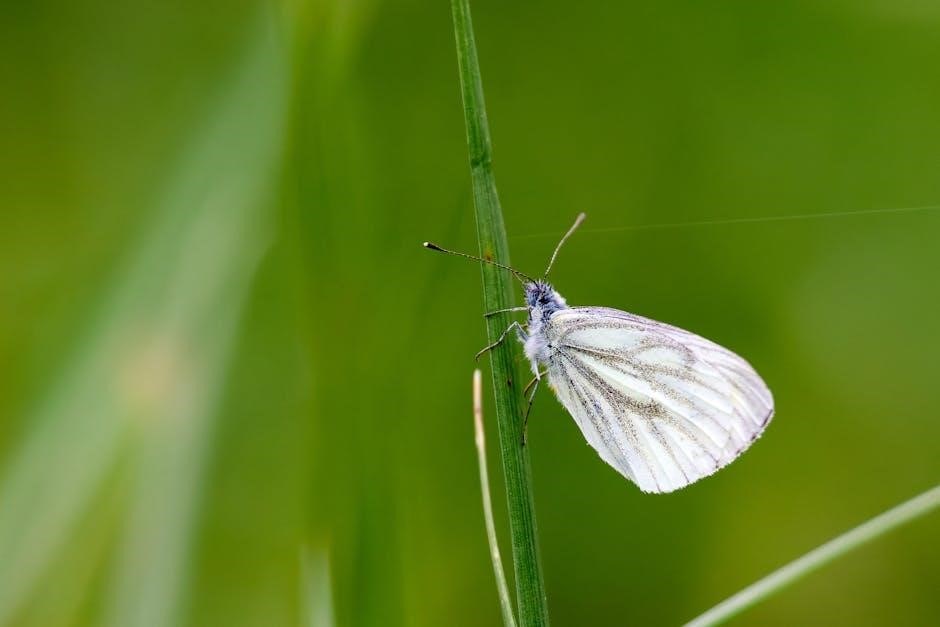
The Future of Conservation Biology
Conservation biology’s future lies in integrating advanced technologies, fostering global cooperation, and adopting holistic approaches to address biodiversity loss and climate change effectively.
10.1 Challenges and Opportunities

Conservation biology faces challenges like climate change, habitat loss, and funding limitations, but these also present opportunities for innovation and collaboration. Advancements in technology and policy can enhance conservation efforts, while community engagement and education can foster sustainability. The integration of traditional ecological knowledge with modern science offers new solutions. Addressing these challenges requires interdisciplinary approaches, global cooperation, and adaptive management strategies to ensure the long-term survival of diverse species and ecosystems. By embracing these opportunities, conservation biology can pave the way for a more resilient and sustainable future.
10.2 The Role of Interdisciplinary Collaboration
Interdisciplinary collaboration is vital for advancing conservation biology, as it integrates diverse expertise to address complex environmental challenges. By combining ecology, genetics, economics, and sociology, scientists can develop holistic solutions. Collaborative efforts often involve policymakers, local communities, and NGOs, ensuring practical and sustainable outcomes. For instance, integrating local knowledge with scientific research enhances conservation strategies. Interdisciplinary approaches also foster innovation, such as using technology for habitat restoration or climate modeling. This synergy is essential for tackling global issues like species extinction and ecosystem degradation, ensuring effective and adaptive conservation practices for future generations.
